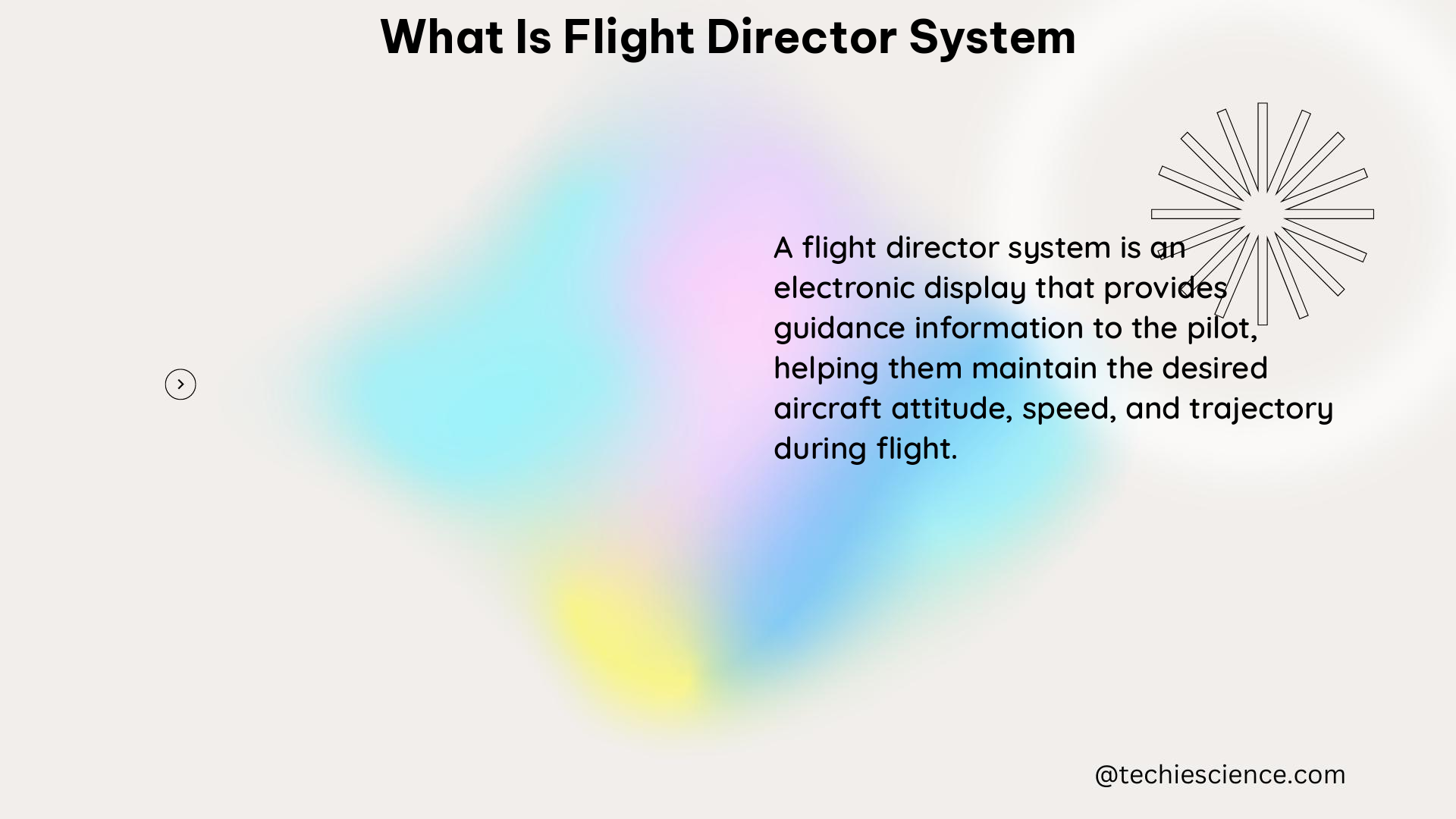The flight director system (FDS) is a critical aircraft guidance aid that computes and displays the precise pitch and bank angles required for the aircraft to follow a selected path. Seamlessly integrated with the autopilot, the FDS commands the autopilot to maintain the necessary aircraft attitude to track the desired trajectory, making it an indispensable tool for autopilot-coupled instrument approaches such as CAT II and CAT III Instrument Landing System (ILS) approaches. The FDS’s display format can vary depending on the specific instrument type employed.
The Fundamental Role of the Flight Director System
The primary function of the FDS is to assist the flight crew in computing, displaying, and in some cases, setting the thrust and speed schedules necessary to achieve maximum aircraft performance or optimal fuel efficiency throughout the entire flight profile. This includes modes for takeoff, climb, cruise, descent, holding patterns, approach, and go-around operations.
The performance management capabilities of the FDS go beyond mere display of computed information. It can also generate control signals to be coupled with the autothrottle and autopilot systems, enabling the desired thrust and speed values to be maintained, thereby reducing the flight crew’s workload. Additionally, the FDS may provide:
- Powerplant overboost protection
- Buffet margin information
- Speed limits and control for various flap, slat, and landing gear configurations
- Overspeed and underspeed protection for the aircraft
Preventing Envelope Exceedance

A critical design requirement of the FDS is to prevent the aircraft from being operated beyond its certified envelope limits. This is achieved through the implementation of “reasonableness logic” that ensures the aircraft remains within its approved operational boundaries.
After the initialization procedures are complete, the FDS provides a means to verify that all the displays and interfaces with the autothrottles, flight directors, instrument bugs, and other systems are functioning correctly. This validation process is essential to ensure the reliability and integrity of the guidance information presented to the flight crew.
Providing Comprehensive Performance Data
The FDS is designed to provide the same information as the aircraft’s computer model(s), making this data available to the flight crew on the flight deck. This allows the crew to independently verify the computed aircraft performance, enhancing their situational awareness and decision-making capabilities.
Additionally, the FDS is capable of performing air mass analysis to assess the effects of typical runway gust conditions, such as 10 knots/gust to 20 knots. This analysis helps to demonstrate the suitability of the concepts used in the FDS design.
Intuitive and Informative Displays
The FDS presents a real-time digital or analog display of the aircraft’s achieved and reference performance within the flight crew’s primary field of view. The nature of this display is designed to provide information to the flight crew, rather than commanding a rejected takeoff or continued takeoff decision, as the final decision remains with the crew.
It is important to note that all forms of annunciation and display should be inhibited once the aircraft reaches the V1 speed. If a display alerts the flight crew that a system threshold has been exceeded, it should be amber in color and may include an aural caution.
Ensuring Robust System Integrity
The FDS is designed to ensure that unannunciated system failure conditions are considered major, in accordance with AC 25.1309-IA. This is because the display of the computed data, regardless of how it is presented, can influence the flight crew’s decision to continue the takeoff roll or initiate a rejected takeoff.
To mitigate this risk, the FDS is designed to make the computation and display of hazardously misleading information or the unannunciated loss of function improbable. The integrity of the external sensors is also a critical consideration, and the computer software should be developed to Level 2 standards.
Integrating Performance Predictions
The FDS may utilize fuel and weight parameters to calculate real-time aircraft range and performance predictions, which can be used to control the aircraft’s operation. These predictions are continuously refined by the system throughout the flight.
The FDS may also use these inputs to arrive at engine-out and drift-down performance predictions. However, these inputs should not be used as the basis for fuel load planning or aircraft range predictions by the aircraft operator, as they are intended for the FDS’s internal use only.
Conclusion
The flight director system is a complex and highly integrated guidance aid that combines aircraft attitude, radio navigational data, and performance management to provide a comprehensive guidance solution for the flight crew. Designed to aid the crew in computing, displaying, and controlling the aircraft’s thrust and speed schedules, the FDS plays a crucial role in ensuring maximum aircraft performance and economy throughout the entire flight profile.
By preventing the aircraft from being operated beyond its certified envelope limits, providing real-time performance data, and maintaining robust system integrity, the FDS is a vital component of modern aircraft avionics, enhancing the flight crew’s situational awareness and decision-making capabilities.
References:
– Flight Director | SKYbrary Aviation Safety
– AC 25-15 – Federal Aviation Administration
– DESIGN OF A FLIGHT DIRECTOR/CONFIGURATION r …
– What is a “Flight Director”? – Aviation Stack Exchange
– Flight Director Systems – Studypool

I have a background in Aerospace Engineering, currently working towards the application of Robotics in the Defense and the Space Science Industry. I am a continuous learner and my passion for creative arts keeps me inclined towards designing novel engineering concepts.
With robots substituting almost all human actions in the future, I like to bring to my readers the foundational aspects of the subject in an easy yet informative manner. I also like to keep updated with the advancements in the aerospace industry simultaneously.